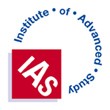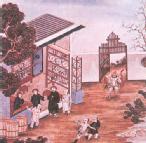Global Jingdezhen
Readings on the Material Culture of Late-Imperial China
Topic: 'Female Consumption in Seventeenth-Century China'
“Female consumption” carries a double meaning—women as consumers and as the consumed—both being prominent features of the urban culture that flourished in seventeenth-century Jiangnan (or the Yangzi Delta region).
Sources:
A. For readers of English:
1. Colourful Lanterns of Shangyuan, a seventeenth-century painting by an anonymous commercial artist depicting an outdoor market of antiques and other collectibles in Nanjing, the southern capital of the Ming Empire. We will view the scroll together during the session. To prepare for this, please visit http://ssil.uoregon.edu/lanterns/ and read the introductory essay
and read the introductory essay by Professor Ina Asim of the University of Oregon.
by Professor Ina Asim of the University of Oregon.
Scroll through the painting and note: (1) Any visual markers of gender and social status of the people in the market; (2) the types and appearances of the wares being offered for sale.
2. Extract from Craig Clunas, Superfluous Things: Material Culture and Social Status in Early Modern China (1991).
(1991).
This chapter introduces two key textual sources for the study of consumption and status: treatises of taste (Wen Zhenheng’s Treatise of Superfluous Things), and inventory lists of property confiscated by the government (Yan Song’s list, “A Record of Heavenly Waters Melting the Iceberg”). (1) Is there any correlation between the objects in these lists and those in the Nanjing outdoor market depicted in the painting? (2) What is Clunas’ argument about the ways whereby things marked social and gender distinctions in Ming China?
B. For readers of Modern Chinese:
3. Extract from Mao Wenfang 毛文芳, Wu; xingbie; guankan 物 / 性別 / 觀看 [Things; Gender; the Gaze].
[Things; Gender; the Gaze].
Mao, a contemporary specialist of Ming literature in Taiwan, offers an alternative reading of the gendered meanings of Wen Zhenheng's Treatise of Superfluous Things. What is Mao's explanation for the denigration of "the feminine" in Superfluous Things?
4. Extract from Wu Renshu 巫仁恕, Shechi de nüren 奢侈的女人 [The Luxurious Women].
[The Luxurious Women].
Wu is a social historian of Ming-Qing China in Taiwan. (1) What, according to Wu’s analysis, are the social stations of the women who were visible consumers in the seventeenth century? (2) What kinds of things did they consume? (3) Why does Wu think that Jan de Vries’ “Industrious revolution” was applicable to China?
C. For readers of Classical Chinese:
5. Extract from Yan Song's inventory (published as Tianshui bingshan lu 天水冰山錄 [A Record of Heavenly Waters Melting the Iceberg]).
[A Record of Heavenly Waters Melting the Iceberg]).
This excerpt includes an array of household items from the “Material Converted into its Money Value” section (Clunas, p. 48). (1) What is the inventory-taker’s logic in the classification and order of these things? (2) What different impressions can be gleaned about women owning/consuming things than Wu Renshu’s?




